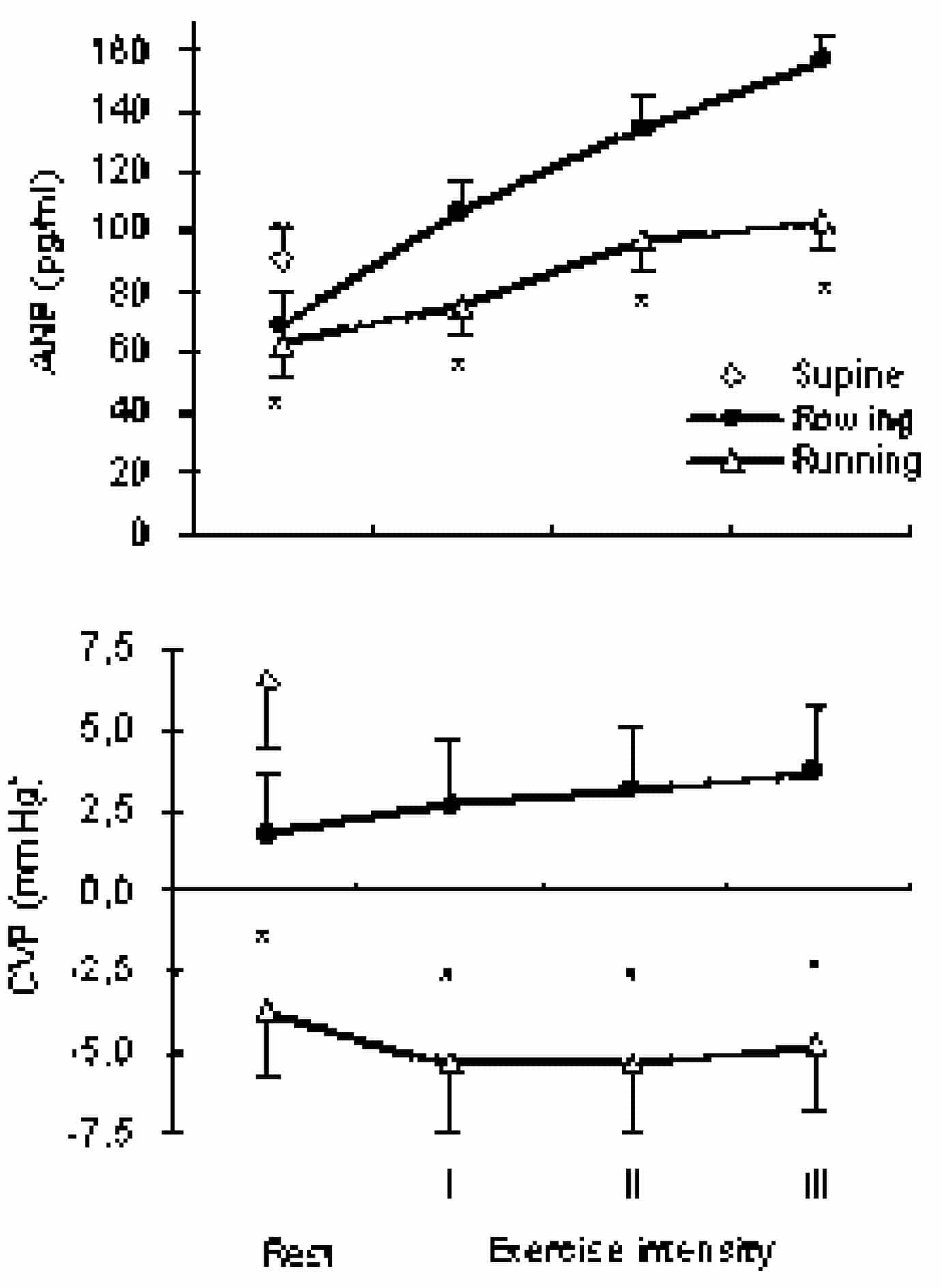Rowing involves significant contribution from both the upper and lower body and is performed in a sitting position, while in running the body position is more erect and the legs are predominantly used. Active muscles propel blood towards the heart, while posture attenuates the central blood volume (van Lieshout et al. 2001). Thus, a lower heart rate (HR) and a larger oxygen pulse, as an index of the stroke volume of the heart, during rowing than during running could indicate that the central blood volume is the largest (Yoshiga & Higuchi 2002). We hypothesized that central venous pressure (CVP) and plasma atrial natriuretic peptide (ANP; Perko et al. 1994) would be higher during rowing than during running.
Six men and three women (age, mean ± S.D. 26 ± 3 years) participated in this study as approved by the Ethics Committee of Copenhagen (KF 01-186/2). The subjects performed two randomly ordered exercise trials of running and rowing. Comparison across exercise mode and intensity were evaluated by multiple analyses of variance with Newman & Cruise post-hoc validation. A P value of < 0.05 was considered statistically signficant.
Each exercise trial included three intensities aiming at a HR of 120, 140, and 160 beat min-1, respectively. Thus, the average HR was similar between rowing and running (mean ± S.D. 138 ± 17 vs. 139 ± 18 beat min-1). Yet, there was a larger average oxygen uptake and min ventilation during rowing than during running (2.5 ± 0.9 vs. 2.3 ± 0.8 l min-1 and 54 ± 23 vs. 49 ± 17 l min-1, P < 0.05). MAP was similar between rowing and running (97 ± 1 vs. 92 ± 1 mmHg). There were enhanced CVP (2.6 ± 0.2 vs. -5.2 ± 0.3 mmHg, P < 0.001) and ANP (131 ± 23 vs. 106 ± 26 pg ml-1, P < 0.01) during rowing compared with running. .
In conclusion, there was an enhanced central blood volume during rowing, as assessed by both plasma ANP and CVP, compared with running. These results support the suggestion that, during exercise, heart rate is influenced by the central blood volume.

